Your quad is a do-anything machine. ATV’s are great for getting things done and for recreation too. But now you’re looking at your tires. Maybe you’ve blown one or they’re getting bald. Or maybe you just want a more aggressive tread pattern and a bigger tire. The problem is you’re a little lost when it comes to your ATV tire size.
How big can you go? Should you go big? How do you even know what all these numbers represent?
Don’t worry, we’ve got you covered. We’ll answer all those answers and more in this comprehensive guide.
How Do You Read ATV Tire Sizes?So, you’re shopping around for tires and you see one listed with a size like 26×10-12. Or, worse yet, you find something listed like 206/80R12.
What the heck does all that mean?
First, you need to figure out if you’re dealing with standard or metric ATV tire sizes.
ATV Tire Sizes: Standard Tire Sizing ChartStandard format is much more common on ATV tires than metric. You might see a tire size written 26×10-12 or, occasionally, 26x10x12. This format is pretty straightforward. It uses three numbers to sum up the size:
If you see a tire size that looks like this: 205/80R12, you know you’re dealing with metric. The metric format is exceedingly rare for ATVs and odds are you’ll never come across it. But if you do, the letter thrown in the middle of those numbers is a dead giveaway. In metric, you always have three numbers and a letter:
There may be other numbers and letters before and after these, but they’re not important for understanding your ATV tire size.
Breaking Down ATV Tire Sizes by the NumbersKnowing how to read those tire sizes is just the first step. You really need to know how to use them. Is 26 inches a reasonable diameter for your quad? What kind of width do you need?
You really need to know how to use them. Is 26 inches a reasonable diameter for your quad? What kind of width do you need?
When you’re considering replacing all of your tires, you’ll want to make sure you get something that will actually fit on your stock vehicle.
Your typical ATV tire diameter fits within a range of about 20 inches for the smallest machines to about 30 inches for your more factory mud-equipped machines.
Basically, your quad will typically fit into one of few categories:
Keep in mind that you’ll want to keep within a couple inches of your stock tire size. If you go too big, you’ll start to rub on your fenders (among other issues). If you go small—well, that’s just silly.
Tire width is easier to understand. Choosing the right tire width has a lot to do with your own preferences and riding style.
A wider tire tends to give you a flatter tread pattern and more grip. A narrow tire gives you a little more control.
ATV’s usually have a wider tire on the rear than on the front to get the best of both tires. A typical rear tire on a quad will be 10 to 11 inches wide while a front tire will be 7 to 8 inches wide.
But matching your tire width to your riding style isn’t the only thing you need to consider. You also need to make sure it’ll physically fit on your chosen wheel. There are two main ways to make sure it’ll fit.
This one is non-negotiable.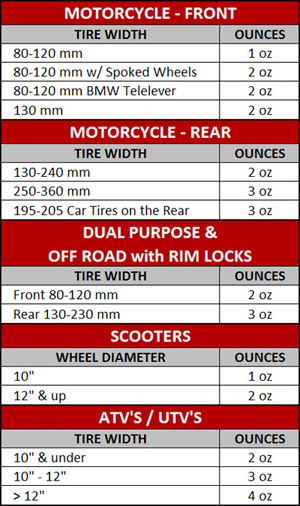 You have to make sure your tire’s wheel diameter matches your actual wheel diameter.
You have to make sure your tire’s wheel diameter matches your actual wheel diameter.
Most off-road wheels tend to be 10 to 12 inches in diameter—which is convenient considering most off-road tires are designed to fit those wheels. That’s a good size as it gives your tire plenty of cushion between the tread and rim, which results in smoother rides and more protection for your rims.
Of course, you can end up with bigger wheels if you have bigger tires, but we’re getting ahead of ourselves.
Choosing the Right Size Tires for Your ATVYou don’t need any old tire. You have to choose the perfect ATV tire size for you. After all, you ride your own way and have your own needs.
We’re going to simplify ride style to three main types:
For a workhorse ATV, it’s not a bad idea to stick with stock. It’ll give you the expected traction and power you need.
Trail riding, like dune riding, means you want to go fast. For that, a wider, flatter tire will keep you gripping and in control. If you ride in the mud, you might want to go with something bigger and narrower along with an aggressive tread pattern.
For that, a wider, flatter tire will keep you gripping and in control. If you ride in the mud, you might want to go with something bigger and narrower along with an aggressive tread pattern.Trails and dunes demand high traction, and you get that by going wider. You don’t necessarily need a taller tire, but a wider one will give you the grip you need.
Dominating rock gardens and taking on bounty holes is done best with a big tire. But going big isn’t as simple as just buying the biggest tire you see.
Can I Put Bigger Tires on My ATV?The short answer is yes.
Here comes the long answer.
Every ATV has a theoretical maximum tire size it can fit without modifying the suspension. It’s typically about one to two inches bigger than your stock tires. So if your ATV came with a 27-inch tire, you could probably fit a 29-inch tire without too much trouble.
But what if you want to go bigger?
That takes some work. You’ll either need to invest in a lift kit or some offset A-arms. These types of kits will often tell you what the max tire size is when you have them installed.
These types of kits will often tell you what the max tire size is when you have them installed.
You can’t go big without some consequences though. Namely, you’ll lose torque due to the increased diameter (big tires like a high-gear kit!) and the extra weight. The weight can also put extra strain on your clutch and shorten the life of your clutch belt.
Luckily, you can get your torque back with a transmission gear reduction or GDP Portal Gear Lift (which has a gear reduction built in).
You can also bolster your clutch with heavy-duty drive belts and eek out even more torque with a clutch kit.
So now that you’re equipped with knowledge, go equip yourself with some tires. Get the ATV tire size you want, and ride with confidence.
RELATED CONTENT: ATVs38 tires15
Share
10
ATV tire explaination: ATV tires are listed in a set of three numbers, generally separated by dashes (25-10-12), or by an ‘x’ (25x10x12) or a combination of the two: 1st Number = The overall tire height when inflated (Ex. 25×10-12 is 25″ tall). 2nd Number = The overall tire width when inflated (Ex.
25×10-12 is 25″ tall). 2nd Number = The overall tire width when inflated (Ex.
How do you size an ATV tire? Shown here is an example of ATV tire sizing. All ATV Tire sizes consist of 3 sets of numbers generally separated by dashes (ex. 25-8-12), forward slashes (ex. 25/8/12), or with an x (ex. 25x8x12). 1st Number = The overall height of the tire. (ex. 25×8-12 tire is 25″ tall.) 2nd Number = The overall width of the tire. 3rd Number = The rim diameter.
What do the numbers mean for an ATV tire size? Understanding ATV tire sizes. Inch size is the most widely used measurement in ATV tires. In the size 25 8.00-12, the meaning of the numbers is as follows: 25 – The overall height of the tire when mounted and inflated. 8.00 – The overall width of the tire when mounted and inflated. 12 – The diameter of the wheel this tire will mount to.
What are tire sizes? Tire Sizes and Bolt Patterns for Your Particular ATV The bolt pattern of your tire is not universal, but it can be narrowed down to three of the most common patterns which are the 3 Lug, the 4 Lug and 5 Lug – each one designed to look just like it sounds.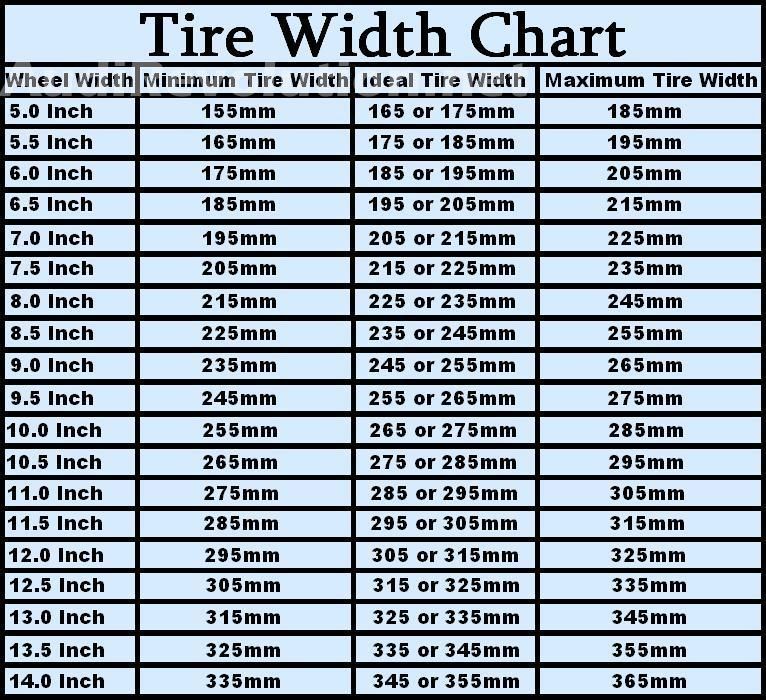
How big is an ATV Quad? That will increase the height and width by 1″ giving your ATV a more aggressive look and feel for off-road performance. Some quads are able to fit tires 2 or 3 sizes larger than stock. If 1″ bigger isn’t large enough for you just check your machine’s clearance.
Table of Contents
The smaller-width tires on the front of a side by side have less surface contact due to their smaller size. This means there is less tire touching the ground at any given time. Because of this, the UTV becomes easier to steer. Because the steering effort is reduced, the side by side becomes easier to maneuver.
Since the motor drives the rear wheel and forces it in a forward direction the downward force to the rear tire needs to be greater than in the front. Since the front tires are pivot steering point they do not need to be as large and actually smaller tires steer better (up to a limit).
Front 19-21″ diameter, 7.5-9.5″ width; rear 19-21″ diameter, 7.5-10″ width
Bigger tires can assuredly help you gain ground clearance and traction in sand, deep mud, snow or uneven terrain. As a general rule, most vehicles can safely handle an increase in tire size one or even two sizes larger than stock.
Mixing different tread depths is generally permissible. The tire industry recommends fitting the new tires onto the rear axle. Some car manufacturers will recommend fitting the new tires to the front axle, for example, if the car is a front-wheel drive.
So when measuring your ATV wheel diameter it’s important to measure the widest point across the center from bead seat to bead seat. As seen here the diameter from the bead seat measures 12″. To determine the width you are going to use the bead seat and measure only from the outside of the wheel to the inside.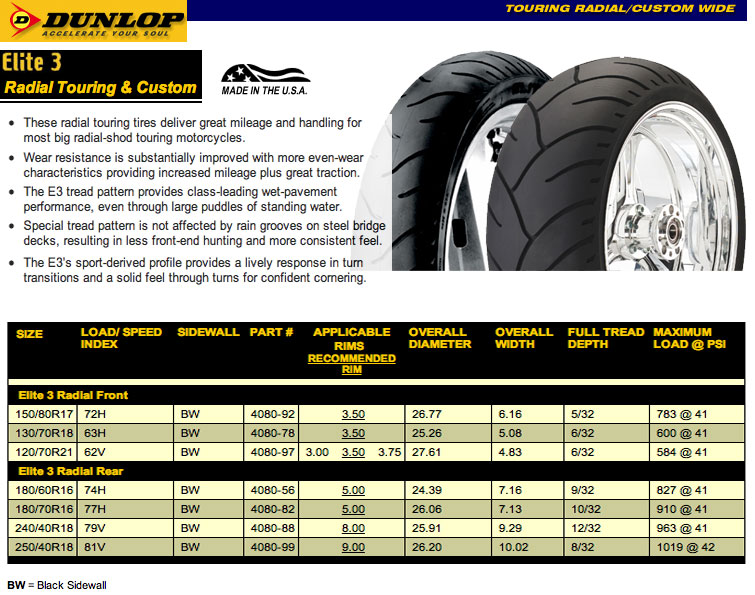
The second number indicates the distance from the mounting plate to the outer bead. For example, a 5+2 offset means there is 5” from the back/inner bead to the mounting plate, 2” from the mounting plate to the outer bead.
The two-digit number that usually follows the tire’s section width tells us the aspect ratio, or tire profile measurement. A lower aspect ratio means a lower-profile tire with a shorter sidewall, while a tire with a higher aspect ratio will have a taller sidewall and look more like a donut.
Front 19-21″ diameter, 7.5-9.5″ width; rear 19-21″ diameter, 7.5-10″ width
The two-digit number after the slash mark in a tire size is the aspect ratio. For example, in a size P215/65 R15 tire, the 65 means that the height is equal to 65% of the tire’s width. The bigger the aspect ratio, the bigger the tire’s sidewall will be.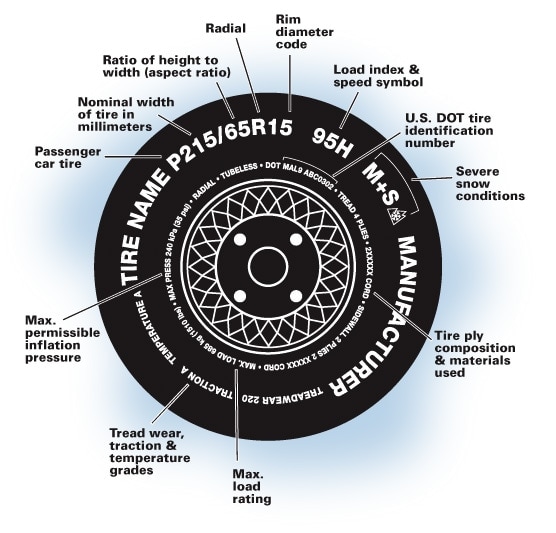
The current tire on my quad is a 22x11x10. The smallest size these tires have is the 22x12x10. 22 = The overall height of the tire when mounted and inflated to recommended air pressure. In this example, the tire is 22 inches tall. 12 = The overall width of the tire when mounted and inflated to recommended air pressure.
25×11-12. The ATV tires within this category are all available in the selected size; 25×11-12. The numbers 25-11-12 represent the dimensions of the tire. The first number is the height, the second number is the width & the third number is the diameter of rim that it will fit on.
Tires are a part of the wheel setup. For instance, your vehicle has a set size of rims, but you can buy different sizes of tires to fit those rims, as long as the middle of the tires is the correct size. That being said, a vehicle with bigger rims will often be able to fit larger tires than other vehicles.
This number indicates that your tire has a width of 265 millimeters. 70. This number means that your tire has an aspect ratio of 70%. In other words, your tire’s sidewall height (from the edge of the rim to the tire’s tread) is 70% of the width. In this case, the sidewall height works out to be 185 millimeters.
Mixing different tread depths is generally permissible. The tire industry recommends fitting the new tires onto the rear axle. Some car manufacturers will recommend fitting the new tires to the front axle, for example, if the car is a front-wheel drive.
Obviously, you will need a certain kind of tire depending on how you use your vehicle. Due to this, a 235 tire might not be better than a 225 tire, or vice versa, but depending on your situation, one tire might serve you better than the other.
– 1st Number = The overall height of the tire. (ex. 25×8-12 tire is 25″ tall.)
(ex. 25×8-12 tire is 25″ tall.)
– 2nd Number = The overall width of the tire. ( ex. 25×8-12 tire is 8″ wide)
– 3rd Number = The rim diameter. ( ex. 25×8-12 tires are designed to mount on a 12″ rim)
The two-digit number after the slash mark in a tire size is the aspect ratio. For example, in a size P215/65 R15 tire, the 65 means that the height is equal to 65% of the tire’s width. The bigger the aspect ratio, the bigger the tire’s sidewall will be.
24×8-12. The ATV tires within this category are all available in the selected size; 24×8-12. The numbers 24-8-12 represent the dimensions of the tire. The first number is the height, the second number is the width & the third number is the diameter of rim that it will fit on.
05/17/2018
The numbers written on the side of the rubber tire can tell the owner of the ATV everything that interests him.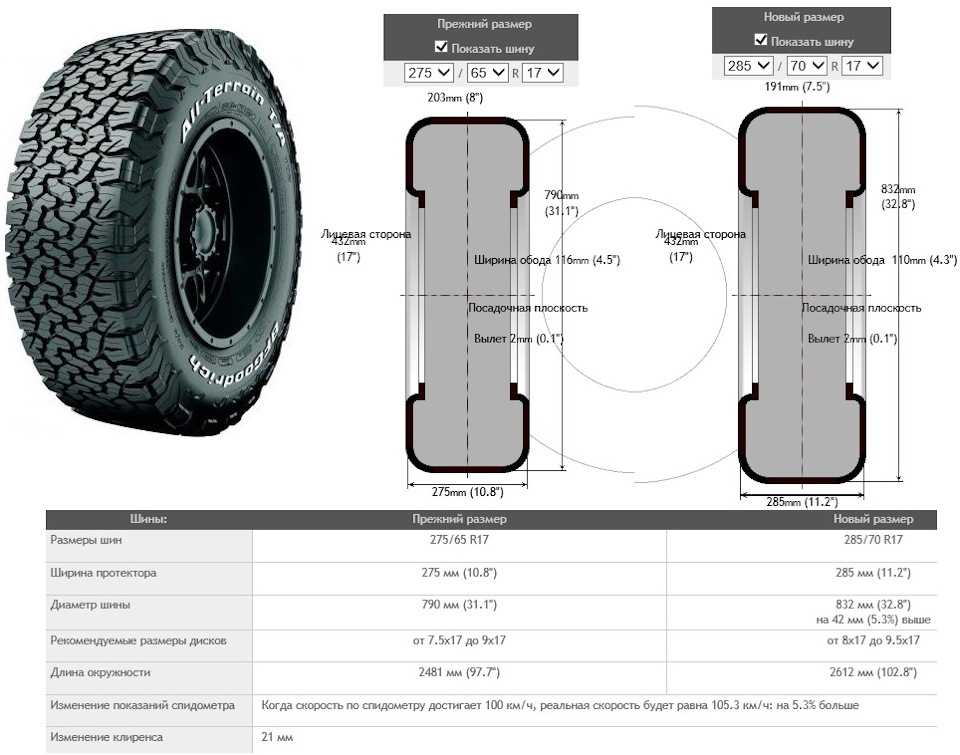 And if you are for some If you don't know what these mysterious numbers mean, then you can be mistaken when choosing the next set of tires. But tires directly determine whether it will go technique further or not. So, in this article you will close all the questions on about the decoding of size ATV tire .
And if you are for some If you don't know what these mysterious numbers mean, then you can be mistaken when choosing the next set of tires. But tires directly determine whether it will go technique further or not. So, in this article you will close all the questions on about the decoding of size ATV tire .
All tires have their own basic parameters - this is the width, height and diameter. The value of these parameters is mainly measured in inches. Exist two units:
1) If you have ATV, then this is for you. English version is the most common number system that is used when determination of tire dimensions on ATVs. All measurements here are in inches. (1 inch equals 2.54 cm). For example, the size indicated in English classification looks like this - 25x8x12 . Let's take a closer look at the meaning of each digit:
- The first digit 25 shows the height of the tire in inches;
- The second digit 8 indicates the width of the tire in inches;
- The last, third digit 12 indicates the diameter of the wheel disk, it is also measured in inches.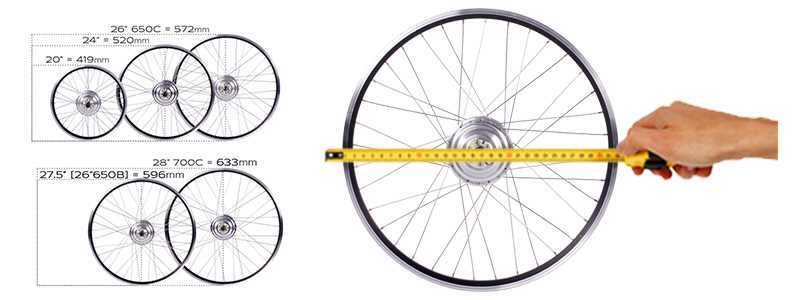 Disc diameter on each ATV can be different. Therefore, be careful before you buy tires for ATV, see what regular disks are installed on your vehicle. nine0004
Disc diameter on each ATV can be different. Therefore, be careful before you buy tires for ATV, see what regular disks are installed on your vehicle. nine0004
And a very important point worth noting. Often our customers ask themselves: “If I have a tire size of 20x10x10, can I put instead of them 20x11x10? The answer is yes. First, you can put rubber on regular wheels with a size exceeding 1 inch in height and width. Secondly, if you want tires even wider, then for this you will need to buy other disks. But again, there are limitations. On discs of other diameters, you can install rubber, the largest is only 2 inches in height and width. nine0004
These two rules must be strictly observed, otherwise, if you try to put tires of an unacceptably large size, this may adversely affect on a quad bike. After all, the rubber will be larger and, accordingly, heavier, which does not fit the technical parameters of the ATV. In production ATVs take into account all the characteristics, so manufacturers of ATV equipment I don't recommend using larger tires at all. But if you do decided to increase the size of tires, call our toll-free number, we we will help. nine0004
But if you do decided to increase the size of tires, call our toll-free number, we we will help. nine0004
2) Also there is another version - metric . Here the dimensions are indicated in percentage and millimeters. For example, size specified according to the metric classification - 205/80 Rx12 . Such designations are usually used on automobile tires. Let's see what's what:
- The first digit of 205 shows the total tire width in millimeters. Converting this value to inches, we will just get the number 8 (in the English version is 8 inches wide). nine0004
- The second digit 80 indicates the ratio of the height of the tire to its width, measured as a percentage. After doing some mathematical manipulations, we get the number 25 (in the English version, the height is equal to 25 inches).
- The number 12, as in the English version, shows the size disk in inches.
- Well, the letter R means that our tire is radial.
The most important thing to remember from the article is that it is not recommended to install tires of huge sizes that do not correspond to the parameters your ATV . If you want to change the tires on your vehicle, give us a call. we will help.
All tires and wheels for ATVs are broadly divided into two large groups: utility and sports. The former are designed for harsh operating conditions on any type of surface for a long time, and the latter are especially durable for high-speed driving on rather tough sports tracks. nine0004
We are more interested in utility tires. In order to maximize the pleasure of a trip along forest paths, mud, sand, water, snow and swamps, you need to initially take care of the most important thing - rubber suitable for each type of surface. Since each set of tires is quite expensive, you need to think about where you plan to ride most often and purchase tires suitable for these surfaces. Mud tires will get stuck in the sand, and sand tires won't work on the trail. Designers have been puzzling over the creation of the most versatile tires for many years, but so far, this is just a dream. True, universal tires have already been created that will ideally prove themselves on different surfaces, but for special cases you will have to fork out and buy a special set of tires. nine0004
Mud tires will get stuck in the sand, and sand tires won't work on the trail. Designers have been puzzling over the creation of the most versatile tires for many years, but so far, this is just a dream. True, universal tires have already been created that will ideally prove themselves on different surfaces, but for special cases you will have to fork out and buy a special set of tires. nine0004
Because ATV tires are subjected to a lot of stress in use, they need to be as strong as possible. Low pressure radial tubeless tires do this best. They are made in such a way that the carcass cord goes from one side to the other without crossing the fibers, and the outside of the shell is covered with a dense cord. These tires have excellent traction and do not lose contact with the surface when cornering. These tires are comfortable to use and easy to maintain. nine0004
Diagonal tires respectively have a diagonal design and are more suitable for soft surfaces such as mud.
Low tire pressure allows you to increase the contact patch with the surface, improving grip and increasing quad performance. Depending on what surface you plan to ride on, for a harder surface, you need to reduce the contact patch by inflating the tire more, and for a soft one, increase it by lowering the tire pressure.
Tire sizes vary in both diameter and width, another indicator is the size of the rim on which these tires are mounted. For example, 25×8-12″ means that the tire is 25 inches in diameter, 8 inches wide and fits on a 12 inch rim. Moreover, in order to increase traction, it is necessary to install tires at the rear wider than at the front, so that the rear wheels do not fall into the front track, but lay a new one with a larger area of contact with the surface. Typically, utility ATVs are fitted with 25-26 inch tires and this is optimal. But some fans want to put more tires, for example, 27-28 inches. Unfortunately, the design of many quadras does not allow this.